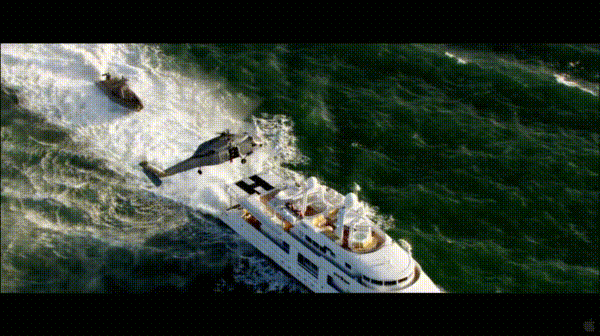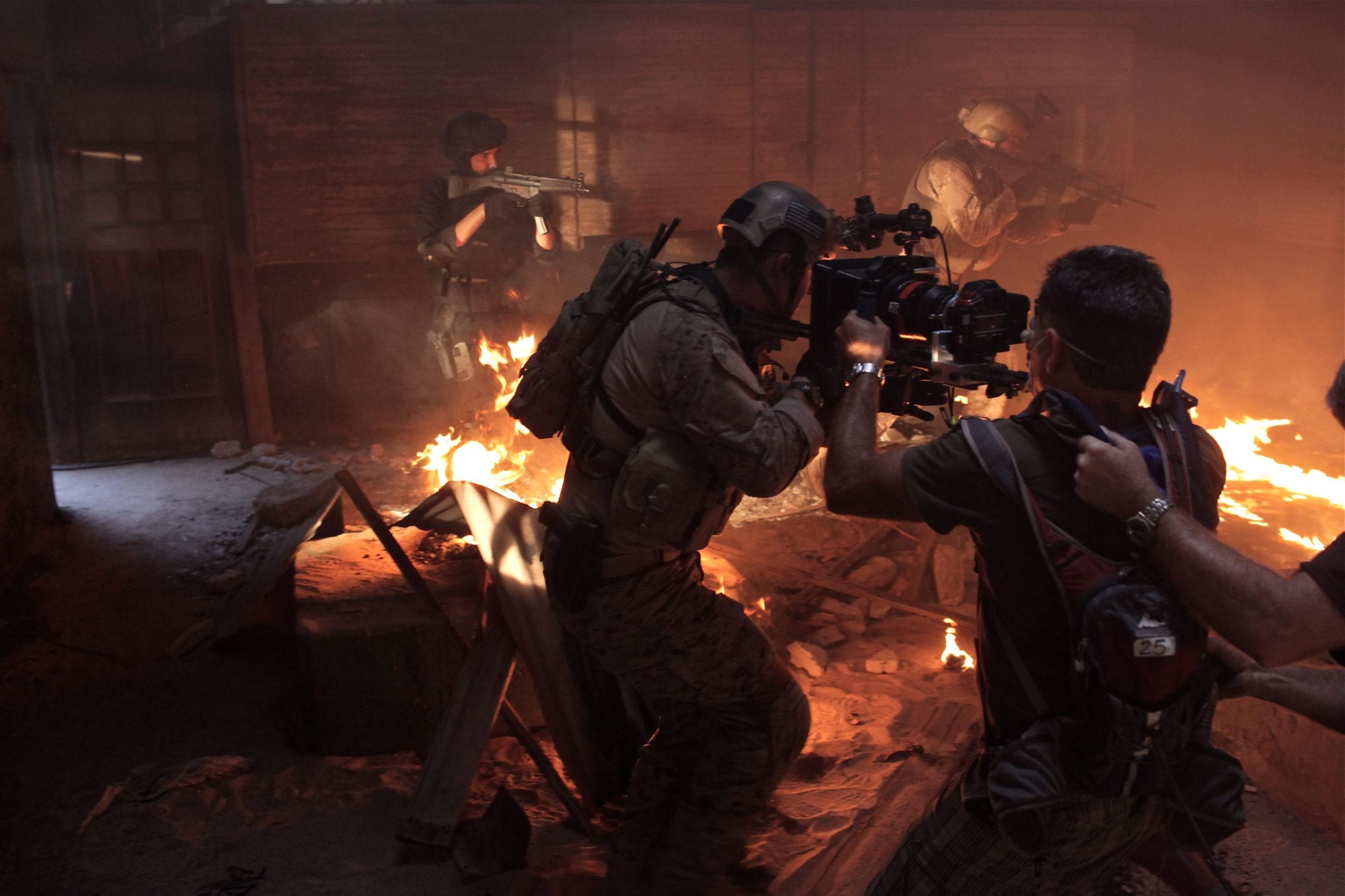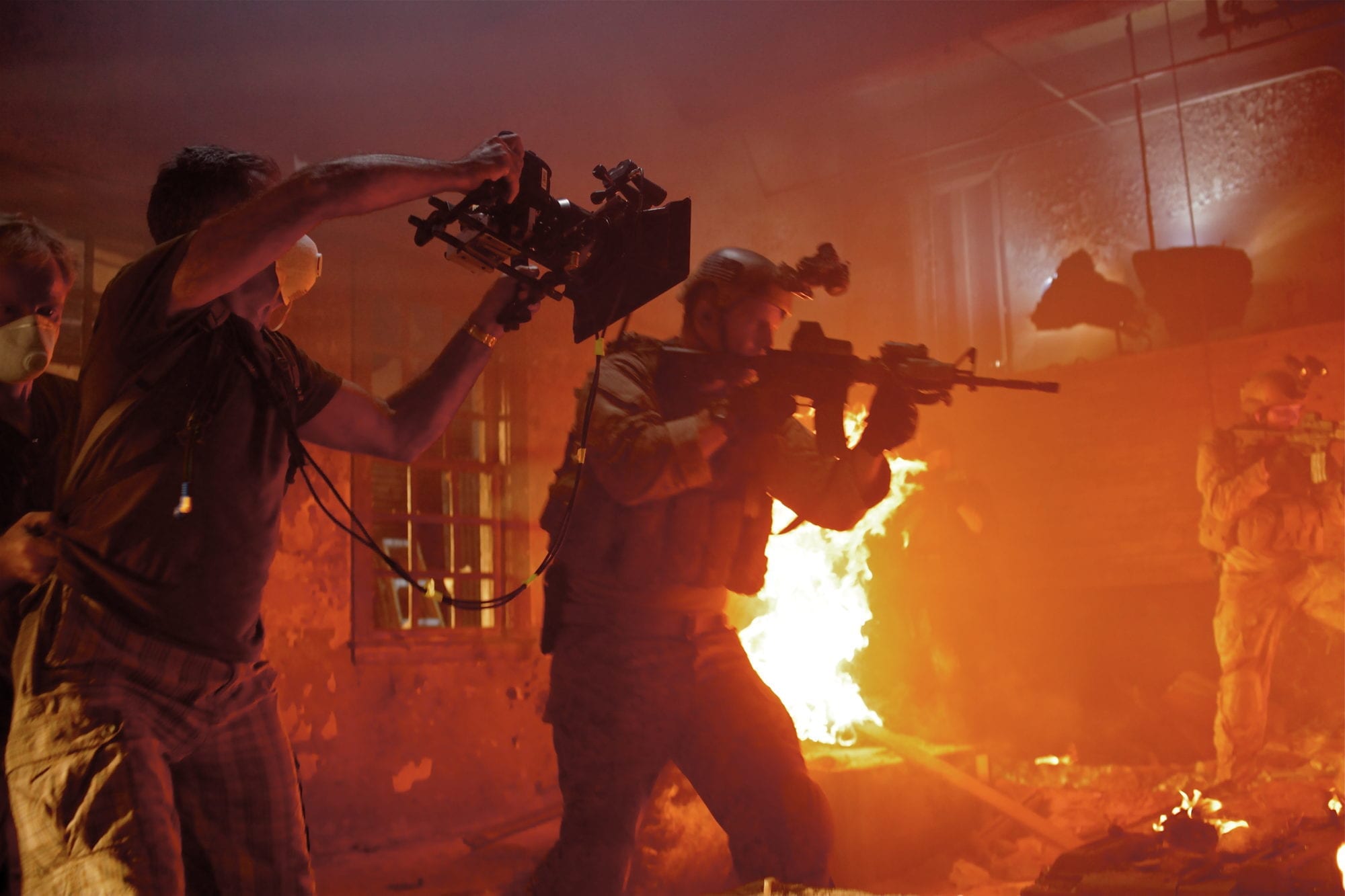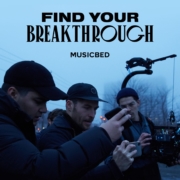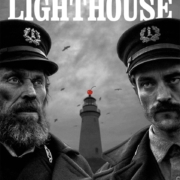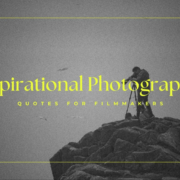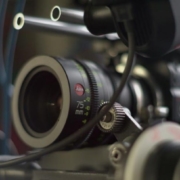Cinematography: Bit Depth Doesn’t Matter, But Story Does
I overheard a conversation between a young cinematographer and a colorist going back and forth discussing the importance of 10 bit color or higher. I didn’t have time to interact then, so let me put my 2 cents in here and now.
We have 8-bit, 10-bit, 12-bit, 16-bit, all these bits. I personally really do not get crazed over all this, because again, it’s the tool that you have access to – which has become cliché at this point but truer than ever. It’s the tool that tells the story the best. Sometimes, a larger camera isn’t easier or a better choice because they can be more problematic, fidgety. Some (Sony I’m looking at YOU) look a little more like video. Just because it has 10-bit information doesn’t mean it is going to give you a better image.
I look at Act of Valor. I stand back and I say to myself, “Is that an 8-bit camera?” You don’t see it screaming it’s 8-bit on the screen. You see an immersive world that you never saw before with Navy SEALs attacking and hitting targets, exfilling and infilling, and doing all this amazing stuff.
This is Exfilling BTW
You’re not saying, “Wow, that’s an 8-bit camera.” There’s not a lot of information there. It wasn’t even the Canon 5D Mark III. It was the Mark II and it was 30 frames per second. There were no 24 frames at that time. We had to do a whole reverse-pull down on this movie as well. Do you look at that film and say, “Wow, is that an 8-bit camera?” You don’t, because I immersed you in a world and took you on an emotional journey and did that not worry about 10-bit, 12-bit or 8-bit. That tool specifically was the best tool for the job.
And it was the best job for this one too
Now, you look at 13 Hours with Michael Bay, or you look at Black Hawk Down and a lot of these other movies. They can do a very large film with a very large budget, a large lighting, and very large control.
Well, we didn’t have that. We were piggybacking on missions that the actual real Navy SEALs were on. We could only bring six or seven, at the most 10, people on a mission. It had to be a very small camera system that the directors, the producers, the camera assistant’s and I could all grab and shoot if we needed to.
BTS from Act of Valor
Look at Act of Valor, specifically the sequence when they come in with the boats. They are coming in on their choppers, the big Night Stalkers that dump the boats in the river, and they blast down the river. That was shot with only six people: two directors, two camera assistants, me and a producer. That’s it, that whole action sequence.

SEALs climb ladder to their extract platform CH47 Helicopter in Relativity’s Media’s upcoming release, “Act of Valor”. Credit: IATM LLC
Now, that’s a lot different than 13 Hours, Black Hawk Down or any of the others. This movie was that type of film. The Navy gave us very limited access. We had all their amazing assets to go on and be able to experience and show you as an audience. Unfortunately, the limitations were that we had to come up with a camera system that was very small, intimate, could mount on them, be helmet cam, go in a boat and then go underwater. It had to be able to do all this with a small footprint and a very minimal crew.
I didn’t worry about 8-bit. I just worried about telling the most compelling story with the limitations that I was given as a cinematographer. Limitations such as we must be small, the camera system has to be very small, we cannot be big, and you’ve got to do it with very minimal lights and crew. That is what I did. The 5D Mark II at the time was the perfect capture device, whether it was 8-bit, 6-bit, 4-bit, 10-bit.
Also on the 5D MK II – I doubt you’re worrying about 8 bits vs 10 bits watching this.
Back to the main point though, it’s the story and it’s whatever is going to engage an audience. If you feel more comfortable shooting on an 8-bit camera, like the C100 Mark II – do it! Actually, let’s just take that camera for example. The color space on the Mark II is far superior to a GH4 or an FS7, or any of those cameras that claim to give you 10bit 4K. The Canon’s color space is tapping onto a 4K sensor too and then downscaling it. You are grabbing much more information than what the final file would have you believe. From a documentary standpoint, these cameras deliver in spades shooting great visuals in a very easy way that grades beautifully.
I used the Canon C300 a lot to do small commercial work and we used it a lot to shoot some of our early educational content in the Inner Circle. It delivers a very good image that gives you a good amount of latitude. Again, I’m not worried about the bits. I’m just worried about how I can tell that story, really immerse an audience and transport them to a different place. I think the end-all of this is just not to worry about the bits and deliver and engage the audience.
In case you were wondering what that process is like for me.
Now, the question of medium to heavy grades or needing to pull keys… Well, I had some heavy-ass grades on Act of Valor and that was 8-bit. It went through this very weird process. Let me describe it to you. We did the movie and we color graded it with Stefan over at Company 3. He did a very extreme look on the movie. He’s a huge Navy SEAL lover and he did it as a massive favor to me. I am so thankful for his work. Bandito Brothers produced the film using their investors and it was basically their baby. Relativity picked the movie up at a later date….
In case you were wondering what that process is like for me…
Cinematography Solutions: How to Color Grade from the Director of Photography’s Perspective
…And then Relativity wanted a whole different color grade, as well as all these new scenes where the edit moved around. There we were with Relativity changing the whole film around after we had already color corrected it. Relativity bought the movie; but they didn’t want to pay to go back and color grade all this footage from the raw files. I had to work with Stefan’s exported grade on a lot of the scenes and some of the scenes where I had raw files mixed with the already-graded files.
I eventually went to Mike Sowa at Technicolor and they did the final grade as well as the Cinnafilm process on that movie. The Cinnafilm process had me going in there, removing all of the artifacting and noise within the 5D Mark II, then layering in a grain texture to make it look more filmic.
That’s what we did for the whole movie. It went through this very weird process, a grade on a grade. An extreme grade and then a grade to try and open up the extreme grade, tweak it and bend it and stretch it. That 8-bit camera and that file held up pretty damn well with all of these limitations.
It’s all about being a good cinematographer. It’s not the camera; it is the cinematographer. You’ve heard this a million times, but its just so damn true. It’s the person behind the camera. A tool is a tool, but you are the power. Whatever intensifies your power as a cinematographer, you want to use it to tell that story. The 5D Mark II was the right tool to energize my creativity on Act of Valor, work within the budget, deal with our limitations, what our access was, and all that stuff, so that was the right tool. I didn’t worry about the bits. Even after all this, I never thought I would put it through this extreme color correction and all of those changes. I thought I’d just grade it once and I’d be okay with it.. Even graded on top of a grade, which stretches the image even more, it still held up.
This is a great learning process. As a cinematographer, if you get the scene and lighting in the pocket and balanced in a way that is not so extreme that you know you don’t have anything in the highlights, crushed all in the blacks, getting the image at a nice place to then be able to do a little contrast shift, add a little color or whatever you might want to do, then you can do almost anything with 8-bit. Act of Valor is a perfect example of this. As a cinematographer, I exposed it the way I like to expose my digital negatives. I went forward with that. I even stretched it in more extremes based on the grade on top of the grade, the film, and the digital negative of 8-bit still held up. It’s all about the cinematographer behind the tool, choosing the right tool to be able to tell the story, no matter the quality of the tool.

